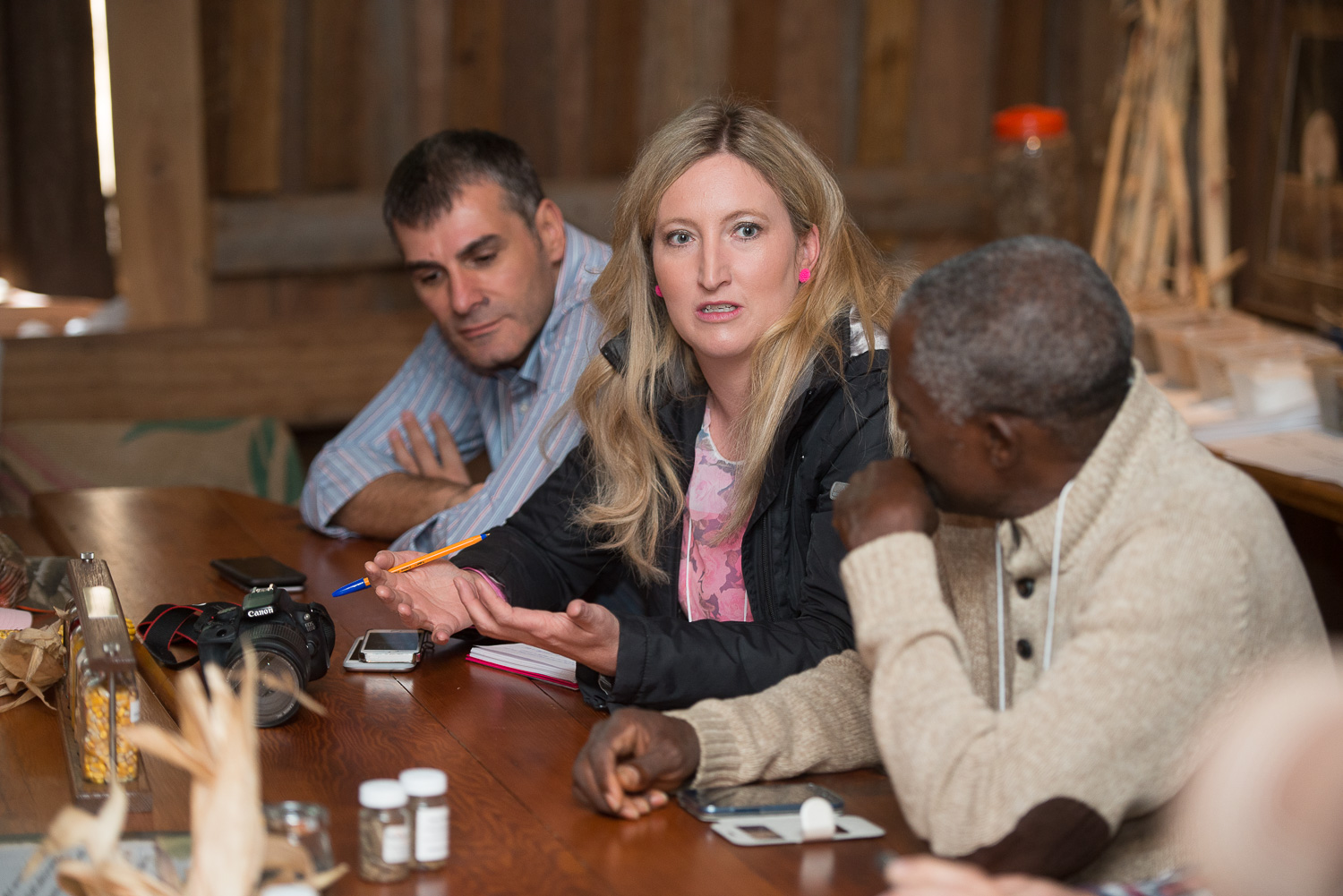Global labor issues present a big problem

The pace of this year’s harvest in Iowa combined with the record-setting yields can stress the labor of any farming operation. Making sure that help is available to run equipment and haul grain is important in keeping the wheels of harvest moving.
Recently farmers from around the world met in Des Moines to discuss important issues they face with their farming operations. All agreed that labor issues are a major concern.
Fourteen farmers gathered to take part in the Global Farmers Roundtable and World Food Prize Symposium last week. The farmers from countries spanning five of the seven continents said that farm labor supply, farm labor costs, and labor work ethic can be a limiting factor in the future for their operations.
Levi Wood, a grain farmer from western Saskatchewan, Canada, has difficulties in finding labor due to the pressures that other industries place on the labor force.
“We’re competing against other industries. In Canada, those industries are mining, oil, and gas. It’s a barrier because even people that grew up on a farm or work on a farm can make $80,000 to $100,000 U.S. dollars a year at 18 with no skills,” he said.
In India, low wages have forced laborers to find other jobs to sustain a living. That puts farmers in the difficult position of choosing expensive machinery to do the work or limiting the size of the farm because of the labor shortage.
“We cannot pay wages that are deserved by farmers,” Balwinder Singh Kang, a farmer from India said. “Expenses have increased so it limits how much can be paid. I don’t think $500 a year is enough for a worker to live and feed a family. But even if we are willing to pay more we can’t get the people to come.”
Farmers in Argentina and Australia are facing a pull of labor from small rural towns to the larger cities according to Maria Beatriz Giraudo Gaviglio of Argentina and Sarah Sammon of Australia.
“We lose a lot of our youth to the big city which is four hours away. So we start with a lack of availability for helpers,“ Sammon told the group.
The story is the same in Argentina according to Gaviglio.
“Everybody wants to live in the cities these days,” she said. “We need people living on the farm, but they prefer to live on less money in the city. The government also gives subsidies for people that don’t want to work.”
To help with the problem, she has been proactive in working with other farm groups in Argentina to create training centers in small cities to help train workers that might not have the opportunity to go to universities in the city.
“The problem is limiting our production, and it is a very big problem in my country,” Gaviglio said.
Kees Huizinga, originally from the Netherlands, has farmed in Ukraine for the past 12 years. He raises soybeans, winter wheat, and other row crops along with 850 dairy cows and 750 sows, farrow to finish. He currently employees 350 people. For his operation, he sees a large labor pool to draw from but he feels the workforce is not motivated to work because of government incentives.
“In Ukraine there is enough labor but there is a shortage of jobs,” he said. “There is an enormous workforce, so it comes down to management. We have to stimulate people to work. We have to spend time teaching people the jobs and then retaining them.”
Kang sees the issue of labor as a crisis in his native country of India with ramifications around the world. He believes that it goes beyond a labor shortage to the willingness of farmers to keep farming.
“In 10 to 15 years no one will be willing to farm if things continue,” he said. “All of these things are problems we are facing. Labor is not there; technology is not there it is all combined together.”
Originally published for the Iowa Soybean
For more than two decades, Joseph L. Murphy has had the pleasure of meeting and connecting with people from all walks of life through photography. He has photographed presidents and heads of state, traversed the winding alleyways of the Fes Medina in Morocco, photographed the sprawling countryside and people that make up Argentina and covered events that have defined the U.S. Most recently, Murphy’s travels have taken him to Cambodia, Mexico, China, Vietnam and Ecuador.
He has spent the past 20 years specializing in agriculture photography for multiple organizations, publications and marketing projects.
A graduate of the University of Iowa, Murphy determined at an early age that his love of photography would shape his vision for life.


